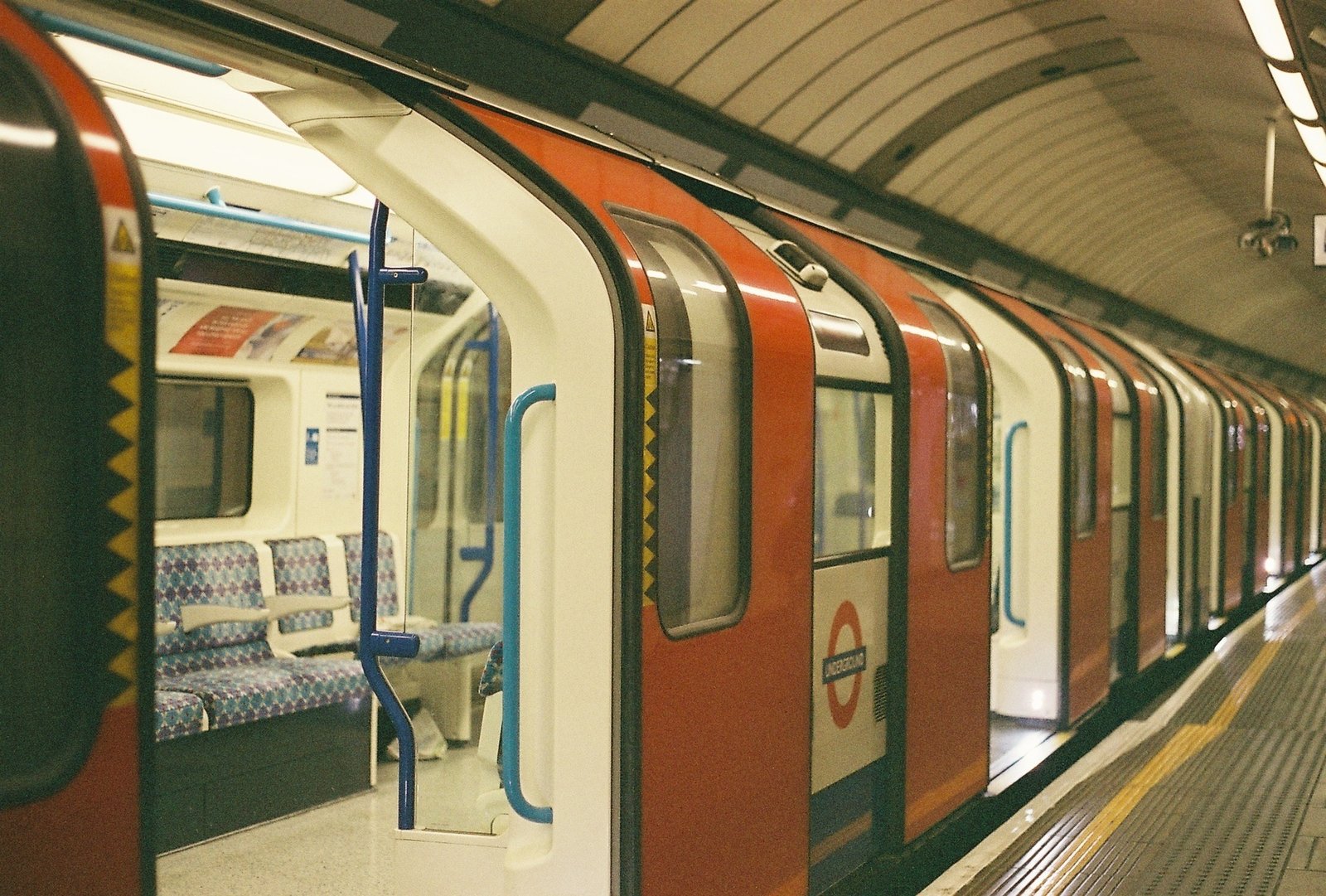Now Reading: The Best Urban Transportation Options in a Crisis
-
01
The Best Urban Transportation Options in a Crisis

The Best Urban Transportation Options in a Crisis
In the face of a crisis, when chaos is at its peak, reliable urban transportation options become more crucial than ever. Whether it’s a natural disaster, civil unrest, or a pandemic, navigating through densely populated areas can be a daunting challenge. In these moments, the ability to swiftly and safely move from point A to point B can mean the difference between survival and being caught in the storm. But fear not, as we delve into the realm of urban transportation, we unveil an array of innovative and efficient modes of getting around when the unexpected strikes. Brace yourselves, as we embark on a journey through the top-notch solutions that can keep urban dwellers on the move during the turbulent times.
Table of Contents
- The Best Urban Transportation Options in a Crisis:
- Exploring Resilient Modes of Travel
- An in-depth analysis of sustainable alternatives during emergencies
- Making informed choices for reliable urban mobility
- Navigating urban transportation challenges with strategic options.
- Q&A
- Insights and Conclusions

The Best Urban Transportation Options in a Crisis:
When disaster strikes and chaos ensues in the city, finding reliable transportation becomes crucial. Here are some of the best urban transportation options to consider in a crisis:
- Public Transportation: Utilizing public transit systems such as buses, subway trains, and trams can be a smart choice during emergencies. With dedicated routes and trained personnel, these modes of transport are often designed to function in challenging conditions. However, it’s important to check for any service disruptions or changes in schedules due to the crisis.
- Bicycles: In times of crisis, bicycles can be a lifesaver. Their versatility allows for quick maneuvering through congested or blocked roadways. Additionally, bicycles are not dependent on fuel and can be easily maintained. It’s wise to have a sturdy lock to secure your bike when not in use.
- Walking: Often overlooked, walking can be the most reliable and efficient mode of transportation when traditional options fail. Whether navigating through crowded streets or bypassing gridlocked traffic, putting one foot in front of the other is a timeless method that can save you time and frustration. Comfortable shoes and a map of alternative routes are essential for successful pedestrian travel.
Remember, personal safety should always be the top priority when choosing a transportation option during a crisis. Consider the specific circumstances of the crisis and assess which mode of transportation best fits your needs. Adaptability and resourcefulness will be key in successfully navigating urban environments during challenging times.

Exploring Resilient Modes of Travel
As the world continues to grapple with uncertainties and challenges, it’s crucial to explore resilient modes of travel that can adapt to evolving situations. Resiliency in travel refers to the ability to withstand and recover quickly from disruptions, ensuring a seamless and safe experience for all travelers. Here, we delve into some creative and unique ways to embrace resilience in your journeys.
1. Connect with nature through eco-tourism
Seeking solace in nature has been proven to have numerous physical and mental health benefits. Embrace resilience by choosing eco-friendly travel options that promote sustainability and minimize harm to the environment. Explore national parks, go hiking or camping, or partake in responsible wildlife encounters that contribute to conservation efforts. By immersing yourself in nature, you not only reconnect with the earth but also support local communities that rely on eco-tourism as a source of resilience.
2. Rediscover the charm of slow travel
In a fast-paced world, slow travel offers a chance to unwind, appreciate cultural nuances, and create lasting memories. Choose a destination and fully immerse yourself in its essence, taking the time to explore hidden gems, meet locals, and savor authentic cuisine. Slow travel allows for flexibility, allowing you to adapt your plans easily should unexpected circumstances arise. Whether it’s a leisurely train journey through scenic landscapes or a leisurely stroll through cobblestone streets, allow yourself to embrace the beauty of the present moment.
3. Embrace innovative modes of transportation
Resilient modes of travel also include embracing innovative solutions that allow for adaptability in changing times. From electric scooters and bicycles for short distances to shared rides and carpooling apps for longer journeys, there’s an array of alternative transportation options available. These modes not only reduce your carbon footprint but also provide options for social distancing and minimizing crowds. In addition, consider exploring futuristic modes of transport such as hyperloop technology or electric air taxis, which hold the potential to revolutionize the way we travel and increase resilience in the face of various disruptions.

An in-depth analysis of sustainable alternatives during emergencies
During emergencies, it is crucial to explore sustainable alternatives to mitigate the impact on both people and the environment. By adopting eco-friendly practices and solutions, we can not only address the immediate needs but also build resilience for the future. Here are some sustainable alternatives to consider:
1. Renewable Energy Sources:
Utilizing renewable energy sources such as solar and wind power can provide a reliable and environmentally friendly source of electricity during emergencies. This reduces the dependency on conventional energy grids that may be disrupted, ensuring continuous power supply to essential services and communities in need.
2. Rainwater Harvesting:
Rainwater harvesting can be an effective alternative to ensure a sufficient water supply during emergencies. By collecting rainwater, we can reduce the strain on traditional water sources, like rivers or groundwater, and decrease the risk of contamination. Implementing simple systems, like rain barrels or rooftop collection systems, enables communities to have access to clean water for drinking, sanitation, and agricultural needs.
3. Sustainable Food Production:
During emergencies, ensuring a sustainable food supply is vital. Communities can turn to organic farming methods, permaculture, or hydroponics to cultivate food locally. These sustainable practices not only reduce the reliance on external food sources but also promote soil health, conserve water, and minimize the use of chemical fertilizers and pesticides.
By actively considering and implementing these sustainable alternatives, we can pave the way for a more resilient and environmentally conscious response to emergencies. Embracing these practices not only helps us address immediate needs but also contributes to a sustainable and brighter future.
Making informed choices for reliable urban mobility
Reliable urban mobility is crucial for a smooth and hassle-free city life. Making informed choices regarding transportation options can make all the difference in our daily commutes. Here are some key factors to consider when it comes to urban mobility:
- Sustainability: Opt for transportation modes that have a minimal impact on the environment, such as walking, cycling, or using public transportation. By reducing our reliance on private vehicles, we can contribute to cleaner air, quieter streets, and reduced traffic congestion.
- Efficiency: Time is precious, and choosing an efficient mode of transport can save us valuable minutes or even hours each day. Research viable alternatives like using ride-sharing services or taking advantage of carpooling options to optimize your travel time.
- Cost-effectiveness: Urban mobility can come with a price tag, so it is essential to weigh the financial implications of different transportation choices. Compare the costs of public transport passes, parking fees, fuel expenses, and vehicle maintenance to find the most affordable options tailored to your budget.
- Accessibility: When making transport decisions, it is important to consider the needs of all individuals, including those with disabilities or reduced mobility. Choose transportation modes that offer accessibility features and prioritize inclusivity in your decision-making process.
- Safety: Prioritize your well-being by opting for transportation methods that prioritize safety. Research accident rates, evaluate the reliability of public transport systems, and take necessary precautions to ensure your daily commutes are as secure as possible.
By contemplating these crucial aspects, you can make informed choices that enhance your urban mobility experience. Remember, the possibilities are vast, and exploring alternatives beyond traditional transportation can open doors to a more sustainable, efficient, and enjoyable urban lifestyle.
Navigating urban transportation challenges with strategic options
As urban areas continue to grow and evolve, transportation challenges are becoming more complex. However, there are strategic options available that can help navigate these obstacles and create a more efficient and sustainable urban transportation system.
One option is to invest in the expansion and improvement of public transportation networks. This can include adding new bus and train routes, increasing the frequency of service, and implementing modern technologies such as contactless payment systems and real-time information updates. By making public transportation more accessible and user-friendly, individuals are more likely to choose it as their preferred mode of transportation, reducing traffic congestion and carbon emissions.
Another strategic option is to promote alternative modes of transportation, such as cycling and walking. Creating dedicated bike lanes, pedestrian-only streets, and providing bike-sharing programs can encourage more people to choose these sustainable options for short-distance travel. Additionally, promoting the use of electric vehicles and carpooling can help reduce the number of private cars on the road and alleviate congestion.
It is essential for urban planners and policymakers to work collaboratively with stakeholders and engage the community in the decision-making process. By involving residents and businesses, it is possible to gain a better understanding of their needs and preferences when it comes to urban transportation. This inclusive approach can lead to the implementation of innovative solutions that not only address the challenges but also enhance the overall quality of urban life.
Q&A
What are the advantages of using bicycles as an urban transportation option during a crisis?
Bicycles are a sustainable and reliable mode of transportation that can easily navigate through traffic congestion. They do not depend on fuel availability, making them a cost-effective option in emergency situations.
Can electric scooters be a good choice for urban transport during a crisis?
Yes, electric scooters offer a convenient and eco-friendly solution, especially for short distances. They are compact, fast, and can easily maneuver through crowded streets, promoting social distancing.
Why are electric cars considered a favorable urban transportation option in a crisis?
Electric cars provide a viable alternative to traditional vehicles by reducing reliance on fossil fuels, thereby lowering pollution levels. They offer the advantage of longer travel distances and can be easily charged at home or through public charging stations.
Are public buses a reliable means of urban transportation during a crisis?
Public buses are an essential mode of transportation as they can accommodate a large number of passengers, making them suitable for mass transit during emergencies. They are cost-effective, readily available, and can efficiently serve high-density areas.
What advantages do ride-sharing services offer in times of crisis?
Ride-sharing services provide flexibility and convenience for urban transportation needs. They allow for efficient use of vehicles, reducing traffic congestion. In addition, they can assist in emergency evacuations.
What role do walking and jogging play in urban transportation during a crisis?
Walking and jogging are effective options for short distances, providing exercise while minimizing the use of other transportation modes. They allow individuals to navigate through congested areas when other options may not be available.
Can public trains and metros be relied upon for urban transportation during a crisis?
Public trains and metros offer an efficient means of transport, particularly in large cities, as they can carry a significant number of passengers while reducing road congestion. However, their operation may be subject to disruption during certain crises.
How do motorbikes or scooters contribute to urban transportation options in a crisis?
Motorbikes and scooters are ideal for quick and agile movement in urban areas, reducing travel time and enhancing mobility. They require less parking space and can weave through traffic, making them an efficient option in emergencies.
Insights and Conclusions
As we conclude our exploration of the best urban transportation options in a crisis, one thing becomes unequivocally clear: adaptability is key. It is during times of upheaval and uncertainty that we truly recognize the value of a well-oiled transport system that seamlessly caters to the diverse needs of a bustling city.
From nimble biking lanes that wind through narrow streets like silk threads connecting a tapestry, to resilient electric scooters zipping past gridlocked traffic like emissaries of progress, the urban landscape thrives on ingenuity. And when unforeseen circumstances unfold before us like a tangled labyrinth, it is the fusion of practicality and creativity that guides us towards viable solutions.
Imagine a city where taxi-hailing apps merge with ride-sharing platforms, leading to a harmonious symphony of transportation options. Picture pedestrians strolling on green, car-free boulevards lined with trees and vibrant street art, offering respite and resplendence in equal measure. Envision an integrated network of buses and trams that silently glide through the cityscape, carrying passengers towards their destinations with impeccable punctuality.
During a crisis, these urban transportation options not only facilitate essential journeys but also foster a sense of solidarity and resilience within communities. They become veritable lifelines, connecting individuals with vital resources and offering a semblance of normalcy amidst chaos.
As we navigate the maze of uncertainty, one thing is certain: the best urban transportation options embrace inclusivity. They factor in the needs of the elderly, champion accessibility for persons with disabilities, and ensure smooth connectivity for all residents, regardless of their location. They stand as a testament to the ingenuity and determination of urban dwellers, who seamlessly integrate technology and sustainability into their daily commute.
In the face of adversity, cities rally together, awakening an unwavering spirit of innovation. Now more than ever, we must recognize that a thriving urban transportation system is not just a luxury but an essential lifeline, a beacon of hope when all else seems unclear. So, let us join hands, pedal through challenges, and glide through adversity, for a brighter future awaits—the best urban transportation options are but the catalysts for change.
As an affiliate, my content may feature links to products I personally use and recommend. By taking action, like subscribing or making a purchase, you’ll be supporting my work and fueling my taco cravings at the same time. Win-win, right?
Want to read more? Check out our Affiliate Disclosure page.


